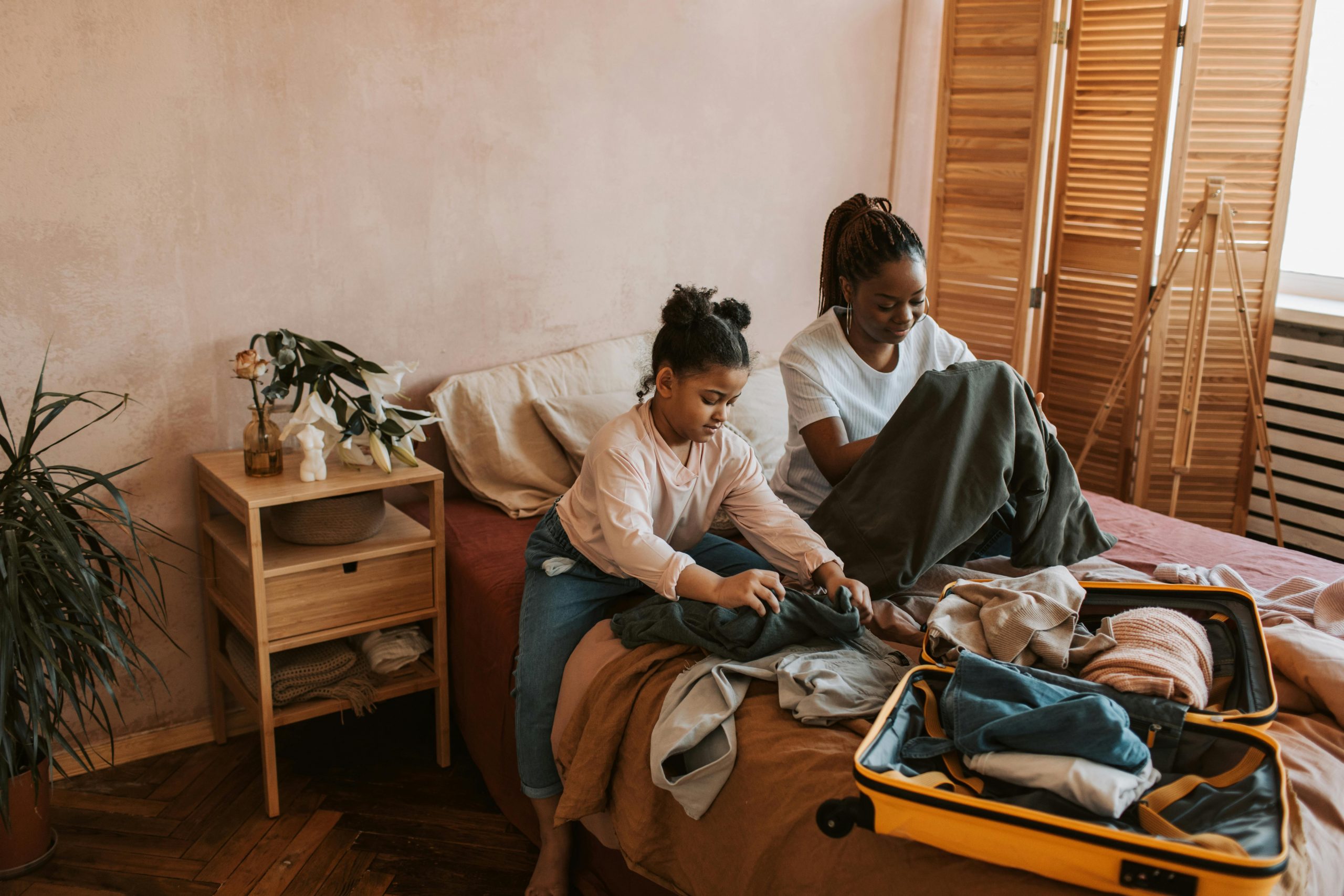

Moving can be exciting, but it’s no secret that packing clothes is one of the more challenging parts of the process—especially for families. Between keeping everyone’s wardrobe organized, protecting delicate items, and making sure you can access essentials quickly, it can feel overwhelming. Luckily, with a few strategic techniques, packing your clothes doesn’t have to be stressful. Here’s a guide every family mover should know.
Why Packing Clothes Carefully Matters
You might think clothes are low-risk, but improper packing can lead to wrinkled outfits, missing items, and chaos on moving day. Taking the time to pack thoughtfully ensures:
- Protection: Your favorite clothes and delicate fabrics stay intact.
- Organization: You can easily find what you need in your new home.
- Efficiency: Saves space and reduces the number of boxes you need.
A well-packed wardrobe can make unpacking faster, leaving you more time to settle in and enjoy your new space.
What to Sort Before You Pack

Before grabbing boxes, take a few minutes to sort your clothes. This step is crucial for families with kids, teens, and adults. Ask yourself:
- What do we wear most? Keep seasonal or frequently used items accessible.
- What can we donate? Moving is a great excuse to declutter.
- Are there items that need special care? Think delicate fabrics, formal wear, or shoes.
Consider creating three piles: Keep, Donate, and Pack Away. This makes the actual packing process smoother and prevents you from moving unnecessary items.
What Supplies You’ll Need
Packing clothes efficiently requires the right materials. Here’s a family-friendly list:
- Wardrobe boxes: Perfect for hanging clothes like dresses, suits, and coats.
- Standard moving boxes: Ideal for folded clothing, shoes, and accessories.
- Plastic bags: Useful for separating small items or keeping things together.
- Packing paper or tissue: Protects delicate fabrics from damage.
- Vacuum-seal bags: Save space for bulky winter clothes or blankets.
- Labels and markers: Helps identify contents quickly.
Having these supplies ready before you start will make the process much less stressful.
How to Pack Hanging Clothes
Hanging clothes are usually the trickiest because you want to prevent wrinkles and maintain their shape. Here’s how:
- Use wardrobe boxes whenever possible. These boxes have a built-in hanging rod.
- Group by type or family member. For example, all jackets for Dad in one section, children’s dresses in another.
- Cover with a garment bag or dry-cleaning bag. This adds protection and reduces wrinkles.
- Don’t overstuff the box. Clothes should hang freely without being squished.
This approach is especially useful for families who have suits, coats, or school uniforms.
Folding Clothes for Boxes: Maximize Space
For most everyday clothing, folding is more efficient than hanging. Here’s how to do it effectively:
- Roll T-shirts and casual clothes: Rolling reduces wrinkles and allows you to fit more items into a box.
- Fold jeans and pants: Lay flat and stack neatly to save space.
- Layer with tissue paper: Keeps delicate fabrics like silk or linen protected.
- Use color-coded packing: Assign a color or label to each family member’s box to make unpacking easier.
Rolling and folding combined can reduce the number of boxes needed, which is a huge bonus for families trying to move efficiently.
Can You Pack Clothes in Suitcases or Duffel Bags?

Absolutely! Suitcases and duffel bags are perfect for family members with lots of smaller items. Benefits include:
- Easy transport: Especially for kids’ clothes or overnight essentials.
- Space-saving: Can be stacked in the moving truck alongside boxes.
- Quick access: Ideal for items you’ll need immediately upon arrival.
For longer trips or multi-family moves, using luggage strategically can also help reduce stress and confusion on moving day.
How to Handle Kids’ Clothing
Packing for kids requires extra thought because their clothes can be small, numerous, and often need frequent access. Here are some tips:
- Use clear bins for quick visibility.
- Separate outfits by day or week if you’ll be moving slowly.
- Label boxes with names and ages to avoid mix-ups.
- Pack a “first-night” bag with pajamas, a few outfits, and essentials for each child.
This makes life easier for parents and keeps kids from digging through every box on day one.
Special Care Items: What Not to Forget
Certain clothes require extra care during a move:
- Delicates: Silk, lace, and fine fabrics should be wrapped in tissue or stored in individual bags.
- Shoes: Keep pairs together in boxes or shoe bags to avoid damage.
- Formal wear: Suits, gowns, and dresses should be hung and covered in wardrobe boxes.
- Seasonal gear: Winter coats, snow boots, and heavy sweaters can be compressed with vacuum-seal bags.
Taking a little extra time for these items prevents headaches and costly damage later.
How to Label Boxes for Easy Unpacking
Labeling is key to a smooth unpacking experience:
- Use large, readable labels. Write family member and contents on each box.
- Color-code for quick identification. For example, blue for Dad, pink for daughter, green for kitchen.
- Mark “priority” boxes. Indicate boxes with essentials like school clothes or work uniforms that you’ll need immediately.
A little effort upfront will save hours when you’re trying to get the household organized.
How to Pack Clothes for Moving Quickly
If you’re short on time, these strategies can help families pack clothes efficiently and are especially useful for those learning how to pack for a move in 3 days:
- Pack by category first: All shirts together, all pants together.
- Use laundry baskets: Great for moving large amounts of folded clothes quickly.
- Keep a bag for essentials: A “moving day kit” with pajamas, underwear, and a few outfits per family member.
- Enlist help: Kids and partners can fold, roll, or organize boxes—making it faster and less stressful.
These tips are perfect for families juggling busy schedules or last-minute moves.
These tips are especially useful for families juggling busy schedules or last-minute moves.
Closing Thoughts: Packing Clothes for a Stress-Free Move
Packing clothes for moving doesn’t have to be a nightmare. By sorting, folding, rolling, using wardrobe boxes, and labeling carefully, families can save time, space, and headaches. Remember to protect delicate fabrics, prioritize essentials, and keep kids’ clothing organized.
With these essential techniques, your family’s move will be smoother, and you’ll arrive at your new home with clothes intact, organized, and ready to wear. A little planning and preparation go a long way in making the process feel manageable and even enjoyable.